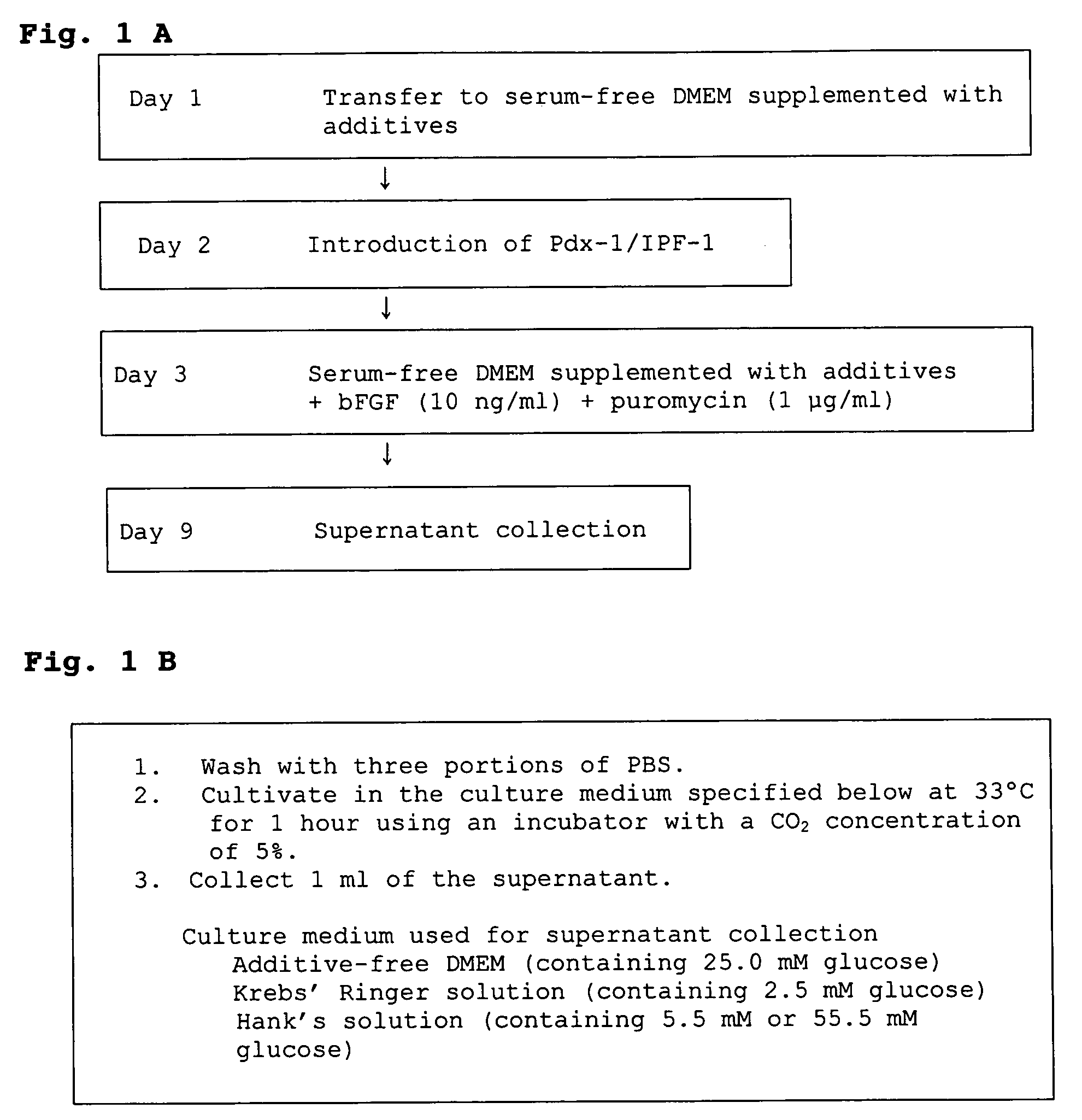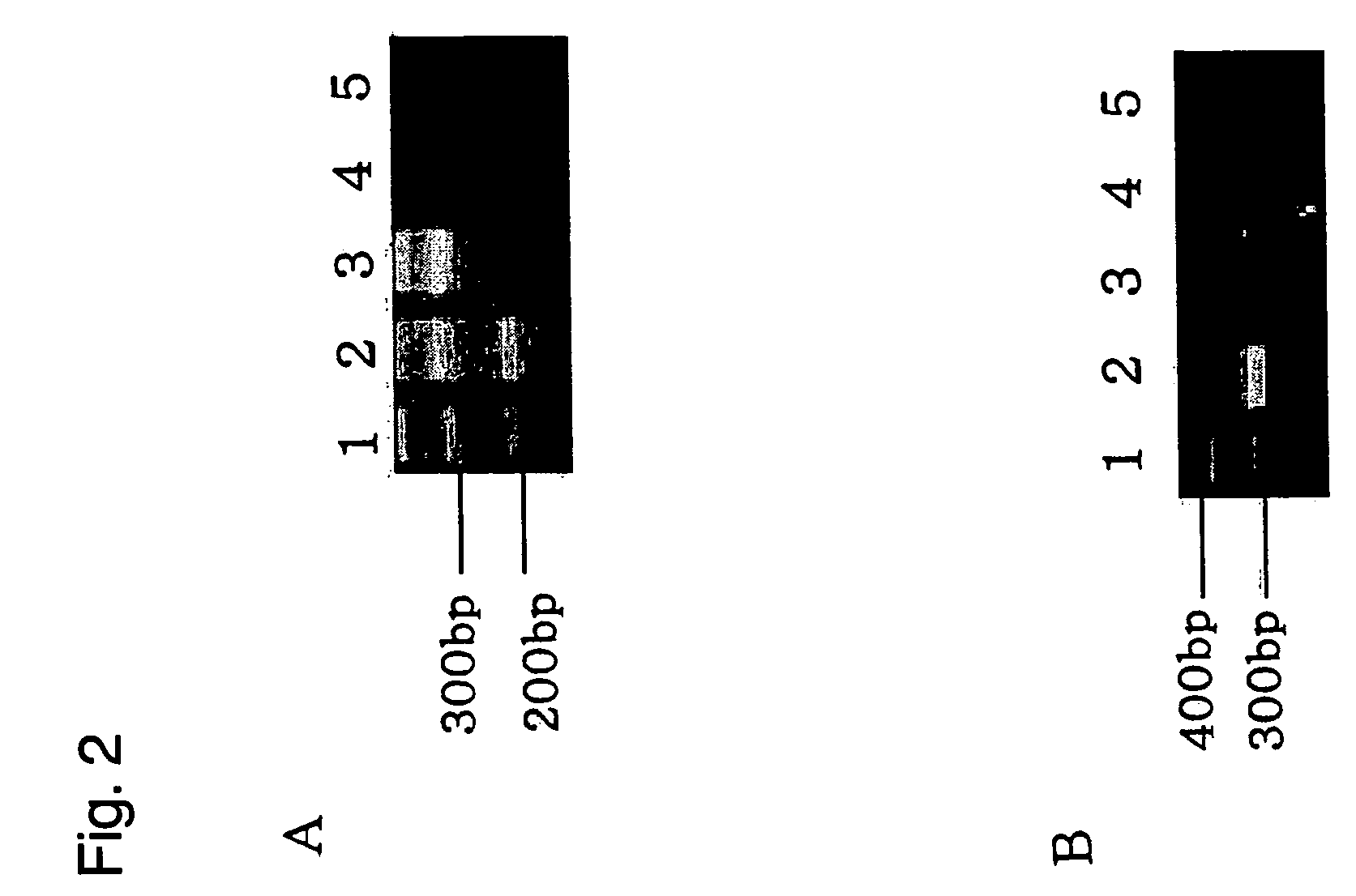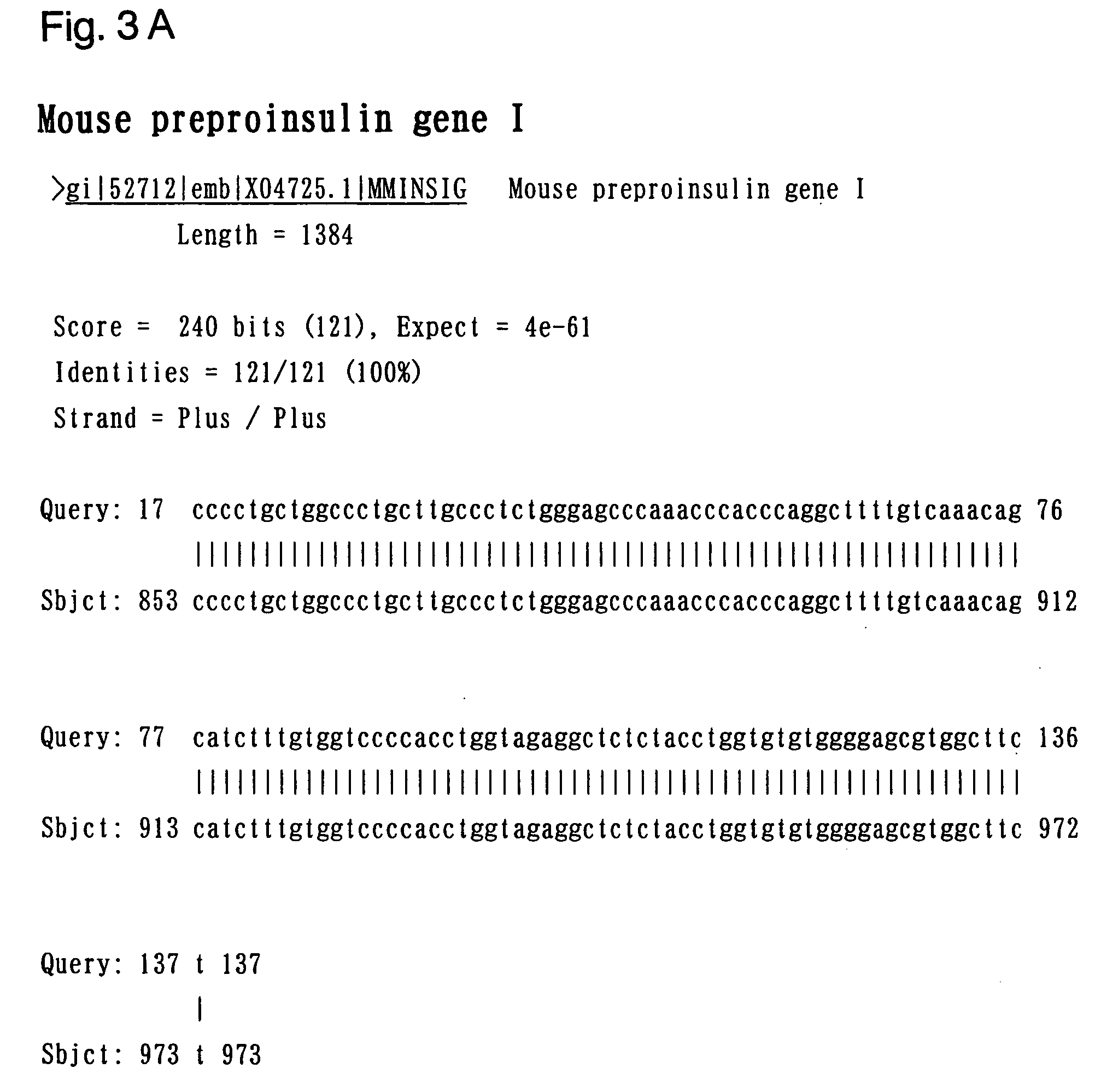Method of forming pancreatic beta cells from mesenchymal cells
a technology of mesenchymal cells and pancreatic beta cells, which is applied in the field of forming pancreatic beta cells from mesenchymal cells, can solve the problems of general use in medical treatment, inconvenient cell transplantation, and reduced blood insulin level or glucose tolerance, and achieves the effect of easy separation
- Summary
- Abstract
- Description
- Claims
- Application Information
AI Technical Summary
Benefits of technology
Problems solved by technology
Method used
Image
Examples
example 1
Preparation of Bone Marrow-derived Mesenchymal Cells Capable of Differentiating into Pancreatic β Cells from Mouse Bone Marrow and Cultivation Thereof
[0216] Ten 5-week-old C3H / He mice were anesthetized with ether and then sacrificed by cervical dislocation. The mice were placed in hemilateral position and disinfected spraying with a sufficient amount of 70% ethanol.
[0217] Then, the skin around the femur was extensively cut, and the quadriceps muscle of thigh was excised all over the femur. The knee joint portion was cut with scissors to remove the joint, and, further, the muscle on the back of the femur was excised. The hip joint portion was cut with scissors, the joint was removed, and the femur was taken out. The muscle adhering to the femur was removed with scissors, and the whole femur was exposed. Both ends of the femur were cut off with scissors and, then, a 2.5-ml syringe equipped with a TERUMO 23G needle was filled with about 1.5 ml of IMDM supplemented with 20% of FCS, an...
example 2
Surface Antigen Analysis of KUSA / A1 Cells
[0220] For isolating and purifying cells capable of efficiently differentiating into pancreatic β cells from the bone marrow, KUSA / A1 cells were analyzed for surface antigens.
[0221] For the analysis, 20 surface antigens were used, namely CD105, Flk-1, CD31 and CD144, which are known to be surface antigens of vascular epithelial cells, CD34, CD117 (c-kit), CD14, CD45, CD90, Ly6A / E (Sca-1), Ly6c and Ly6g, which are known to be surface antigens of hematopoietic system cells, CD140 known to be a mesenchymal cell surface antigen, integrins CD49b, CD49d and CD29, and matrix receptors CD54, CD102, CD106 and CD44.
[0222] First, KUSA / A1 cells were distributed into the wells of a 96-well U-shaped plate (1×104 cells / well). An anti-mouse CD105 antibody (product of Pharmingen) labeled with biotin by the conventional method [Koso Kotaiho (Immunoenzyme Technique), published by Gakusai Kikaku (1985)] was added to a buffer for FACS (1% BSA-PBS, 0.02% EDTA, ...
example 3
Induction of Differentiation of Bone Marrow-derived Mesenchymal Cells into Pancreatic β Cells—(1)
[0237] The KUSA / A1 cells obtained in Example 1 were treated with trypsin and transferred to a 6-well dish (product of Falcon) so that the cell density might become as low as possible.
[0238] The cells were cultured in serum-free DMEM containing insulin, transferrin, progesterone, putrescine and selenium or in DMEM containing 10% FBS at 33° C. for 12 days using an incubator with a CO2 concentration of 5%.
[0239] bFGF (recombinant human basic fibroblast growth factor; product of R&D) was added to each of the serum-free or serum-containing wells to a final concentration of 10 ng / ml. Hereafter, unless otherwise specified, cell culture was carried out under the same conditions while medium exchange was conducted at 2-day intervals.
[0240] After 12 days of cultivation, the medium in each well was discarded, the cells in each well were washed repeatedly with three portions of PBS. After washin...
PUM
| Property | Measurement | Unit |
|---|---|---|
| Adhesion strength | aaaaa | aaaaa |
| Cell angle | aaaaa | aaaaa |
Abstract
Description
Claims
Application Information
 Login to View More
Login to View More - R&D
- Intellectual Property
- Life Sciences
- Materials
- Tech Scout
- Unparalleled Data Quality
- Higher Quality Content
- 60% Fewer Hallucinations
Browse by: Latest US Patents, China's latest patents, Technical Efficacy Thesaurus, Application Domain, Technology Topic, Popular Technical Reports.
© 2025 PatSnap. All rights reserved.Legal|Privacy policy|Modern Slavery Act Transparency Statement|Sitemap|About US| Contact US: help@patsnap.com



